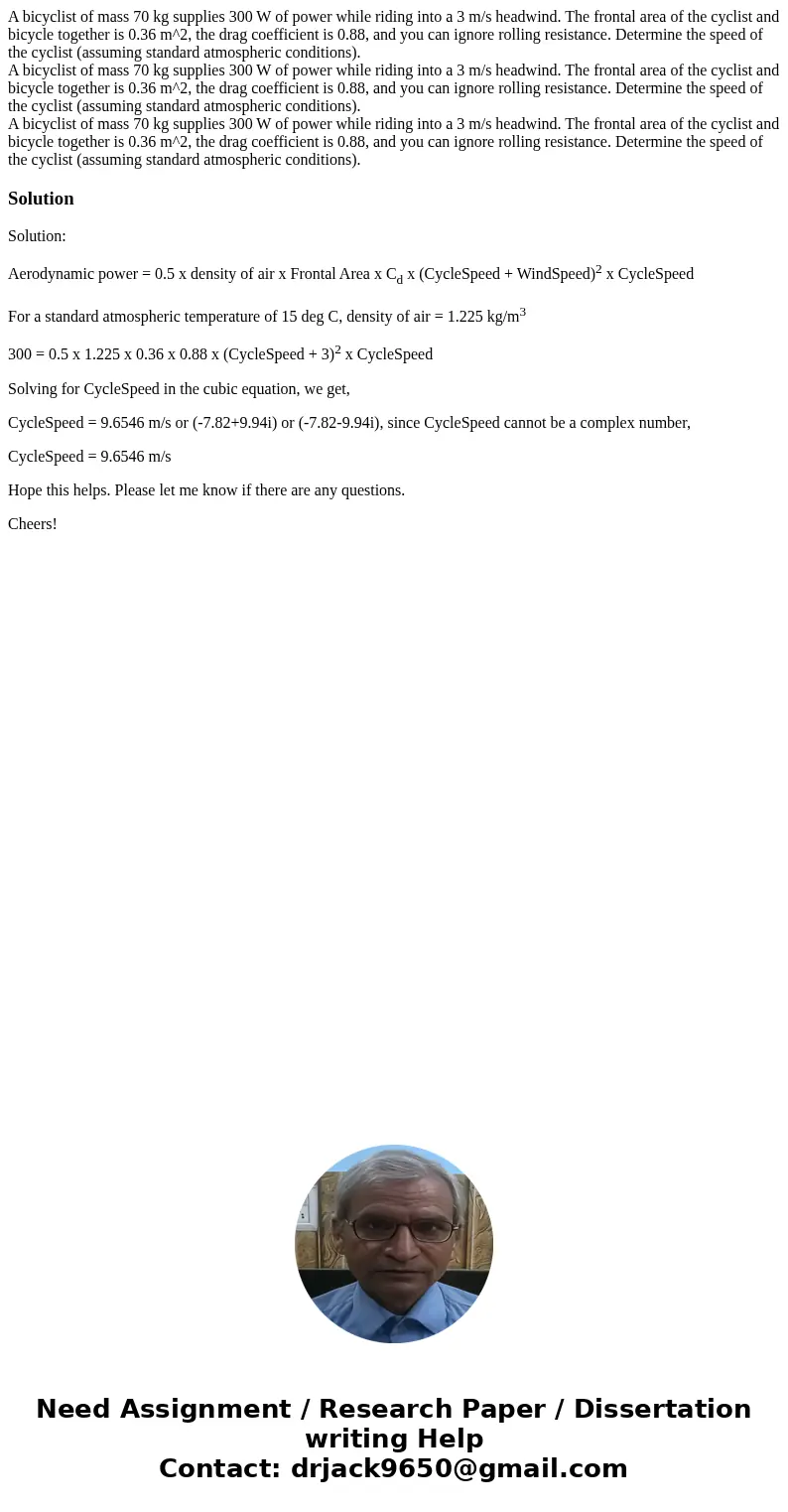A bicyclist of mass 70 kg supplies 300 W of power while ridi
A bicyclist of mass 70 kg supplies 300 W of power while riding into a 3 m/s headwind. The frontal area of the cyclist and bicycle together is 0.36 m^2, the drag coefficient is 0.88, and you can ignore rolling resistance. Determine the speed of the cyclist (assuming standard atmospheric conditions).
A bicyclist of mass 70 kg supplies 300 W of power while riding into a 3 m/s headwind. The frontal area of the cyclist and bicycle together is 0.36 m^2, the drag coefficient is 0.88, and you can ignore rolling resistance. Determine the speed of the cyclist (assuming standard atmospheric conditions).
A bicyclist of mass 70 kg supplies 300 W of power while riding into a 3 m/s headwind. The frontal area of the cyclist and bicycle together is 0.36 m^2, the drag coefficient is 0.88, and you can ignore rolling resistance. Determine the speed of the cyclist (assuming standard atmospheric conditions).
Solution
Solution:
Aerodynamic power = 0.5 x density of air x Frontal Area x Cd x (CycleSpeed + WindSpeed)2 x CycleSpeed
For a standard atmospheric temperature of 15 deg C, density of air = 1.225 kg/m3
300 = 0.5 x 1.225 x 0.36 x 0.88 x (CycleSpeed + 3)2 x CycleSpeed
Solving for CycleSpeed in the cubic equation, we get,
CycleSpeed = 9.6546 m/s or (-7.82+9.94i) or (-7.82-9.94i), since CycleSpeed cannot be a complex number,
CycleSpeed = 9.6546 m/s
Hope this helps. Please let me know if there are any questions.
Cheers!

 Homework Sourse
Homework Sourse